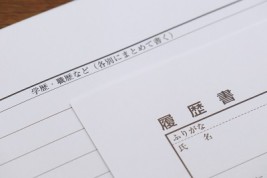The IT industry in Japan is providing several opportunities for foreign IT engineers. Among all the engineers working in the country, 3 percent of those are foreigners. With the country facing a deficit of engineers by 2030, Japanese IT companies are looking for more It professionals offshore.
Working as an engineer in the Land of the Rising Sun can be exciting but work-life balance hinders most foreign workers from sending their applications. To shake off this reputation, many companies are easing up on the schedules of IT engineers in an effort to encourage work-life balance.
Contents
Working Hours

An IT engineer typically starts working at 9:00 or 10:00 and ends the day after 8 hours of work. However, some stay at the office for an hour or two to avoid the rush hour.
Flexible Working Hours
Some companies still prefer engineers to work on the set working hours but more IT companies and engineering departments are adopting a flexible schedule nowadays. This is part of the efforts to reduce overtime among employees. In addition, the flexible working hours also allow engineers to avoid rush hour stress and crowds, and give them time to attend to other matters and conduct personal transactions like a doctor’s appointment.
An Engineer’s Workday

9:00~12:30: Start of Work, Work Assembly or updates
12:30 ~ 13:00: Lunch
13:00 ~ 16:00: Continue working on projects and tasks
16:00 ~ 19:00: Going home, after-work parties
This is the typical schedule of an IT engineer working in an office. For those working from home have flexible schedules, they may have different working hours and some may be shorter compared to the above sample.
Day Schedule
Companies in Japan have morning assemblies called chourei which takes about 15 minutes. The whole team comes together and shares information about work progress and their schedule or goals for the day. Sharing information provides everyone in a team an overview of their tasks to avoid delays and suggest improvements in projects.
After the morning assembly, engineers also have to check on emails and answer queries from clients in the morning. This helps them know if new projects are given or if clients request for new details and functions in an ongoing project.
Project Handling
IT companies and departments received a handful of projects which are then assigned to different teams. Each member has his/her own responsibilities and those will affect how an IT engineer’s schedule would go.
Planning Stage
On an event when a new project is given, a team starts to plan, schedule, and research as part of their morning schedule. Members are assigned to handle project management, estimate cost, and plan the working hours needed for each task.
Members research about technologies related to their tasks and inform the team. In their regular meetings, the team shares their ideas on how to proceed with their project.
Development Stage
In the late morning, engineers start working on the actual project after schedules and estimates have been approved. When a team’s already working on a project, this part of the process is usually done first thing after the morning assembly.
The team begins designing algorithms and functions in this stage. This also takes days to complete depending on how big the project is. So a workweek of an engineer may comprise project development.
Though research has been done in the planning stage, the team also conducts thorough research during the development of the project. This involves solving backlogs and issues in a program as some previously searched technologies and developments might not be compatible with the current project.
Project Completion
When everyone is done with their respective tasks in a project, team members conduct a series of tests to check for bugs and major issues. This review process can last for half a day or two depending on the size of the project. This stage also requires members to list down suggestions to improve the output.
Afternoon Schedule
Reviewing does not only happen when the project has been completed. Every step of the process of each member’s tasks is reviewed by themselves or by another engineer assigned.
In this part of the day, engineers prepare a list of what they have accomplished within the day to report during the next day’s morning assembly. This also gives them time to organize and keep track of or set their daily, weekly, and even monthly goals.
After Working Hours
As mentioned above, people tend to leave work late to avoid the rush hour so some leave the office around 19:00. Some engineers continue working to have a headstart the next day or do overtime work to finish a project within the day. Nonetheless, overtime does not happen as frequently nowadays.
Just like other businesses in Japan, IT companies and departments also go for drinks to celebrate a finished project, holidays, promotions, or just hang out with colleagues. In bigger companies, engineers can join club activities such as sports or take this time to study the Japanese language.
Days Off, Paid Leaves, and Holidays
 A few of the questions asked by IT engineers who don’t really know much about the country are the number of days off, holidays, vacations, and breaks. Employers must give 45 minutes to an hour worth of break in a workday. Companies should also let employees have one or two days off in a week.
A few of the questions asked by IT engineers who don’t really know much about the country are the number of days off, holidays, vacations, and breaks. Employers must give 45 minutes to an hour worth of break in a workday. Companies should also let employees have one or two days off in a week.
For vacation leaves, companies should grant a minimum of 10 days paid vacation leaves to new employees after working for six months. Some companies even give additional vacation leaves.
Holidays also affect workdays. Japan has 16 national holidays and most of them fall on a workday. That means more time to explore the country and find new hobbies for IT engineers working in Japan.
Conclusion
As more foreign IT engineers pursue their careers in the country, the work environment continues to shape to provide more flexibility and promote great work-life balance. Though the rush hours remain, the reform efforts made by companies will relieve the stress coming from commuting and provide more opportunities for IT engineers to learn new skills and go for vacations in the country.
Sources:
https://blog.gaijinpot.com/working-past-the-time
https://kimi.wiki/work/workday-japan-engineer
https://medium.com/devjobs-jp/software-developer-in-japan-myths-work-life-balance-9a7a41315678
https://www.jetro.go.jp/en/invest/setting_up/section4/page5.html










